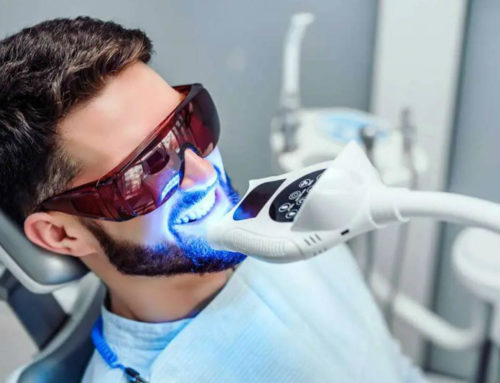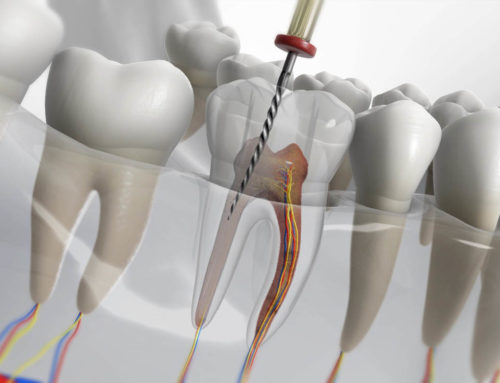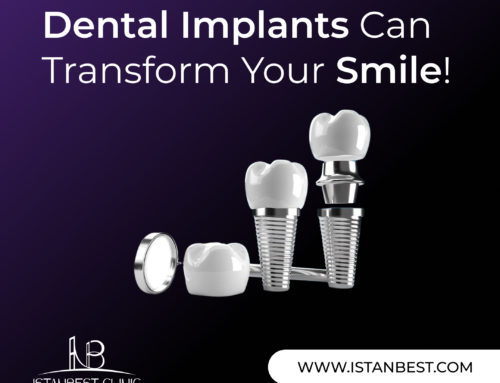Turkey has become the number 1 dentistry option all over the world, as a country that boasts of highly skilled and trained dental professionals, it has seen significant growth in the dental implant market in recent years
A solution that revolutionized the field of restorative dentistry. Dental Implants have become a popular treatment option for patients who want to replace missing teeth with a long-lasting, natural-looking solution.

Over the years, there have been many advancements in dental implant technology, and one of the most significant breakthroughs is the SLActive dental implant.
The SLActive dental implant is a product of Straumann, a Swiss-based company that has been at the forefront of dental implant innovation for more than 60 years. The company has a reputation for producing high-quality dental implants that offer superior functionality and durability.
What is the SLActive dental implant?
The SLActive dental implant is a type of dental implant that has a special surface treatment that enhances its osseointegration properties. Osseointegration is the process by which the implant fuses with the surrounding bone tissue to create a stable foundation for a dental restoration, such as a crown, bridge, or denture.
The SLActive dental implant is made from high-quality titanium, which is a biocompatible material that is well-tolerated by the human body. The implant has a unique surface treatment that creates a micro-structured surface that promotes faster and stronger bone formation around the implant.
The SLA endosseous surface of Straumann dental implants presents a promising solution for swift anchoring in bone. It is now a standard treatment for early restoration after a mere six weeks of healing, with a high probability of success. Laboratory experiments using cell cultures demonstrate the osteoconductive properties of the SLA surface. In-vivo studies conducted with removal torque experiments and histologic analyses further establish the speedy osseointegration of implants with the SLA surface.
Clinical studies also show excellent results, with an overall implant survival rate greater than 99% five years post-restoration, as evidenced in a prospective multicenter study. Patients experience the benefits of early-loaded implant restorations, quickly resuming function following surgery and provisional restoration.
How does the SLActive surface treatment work?
To achieve the SLActive surface treatment on an implant, a series of chemical and thermal processes are implemented. First, the implant’s surface is blasted with titanium particles to create a rough texture. Next, the rough surface is cleaned with an acid solution to eliminate any impurities and further increase its roughness. Finally, the implant is heated to a high temperature to generate a thin layer of titanium oxide on the surface.
This treatment produces a hydrophilic surface that has an affinity for water molecules. Consequently, a protein layer forms, which enhances the body’s reaction to the implant. The protein layer attracts osteoblasts, cells responsible for producing new bone tissue. The osteoblasts then attach to the implant surface and generate new bone tissue that integrates with the implant, resulting in a sturdy foundation for a dental restoration.

What are the benefits of the SLActive dental implant?
Compared to conventional dental implants, the SLActive dental implant provides various advantages, such as faster osseointegration.
The SLActive surface treatment encourages stronger and faster bone formation around the implant, which promotes faster osseointegration.
Furthermore, the stronger bone formation enhances implant stability, lowering the risk of implant failure.The faster osseointegration and increased stability lead to shorter healing times, enabling patients to receive their dental restorations sooner.
The SLActive dental implant has also been found to offer better long-term outcomes than traditional implants, with a lower risk of implant failure and improved aesthetic results.
Moreover, the SLActive dental implant is versatile and can be used in a wide range of clinical situations, including single-tooth replacement, multiple-tooth replacement, and full-arch restorations.
Clinical Data For SLActive Implant
Cochran et al. conducted a prospective clinical study to investigate the predictability and safety of restoring 4.1 mm diameter Straumann Standard implants after six to eight weeks of implant placement in bone classes I to III and 12 to 14 weeks in bone class IV.
The studies, which included six centers in four countries, received approval from the local IRB and Ethics Commission.
The studies aimed to assess the placement and restoration of dental implants with a sand-blasted and acid-etched surface that were in contact with osseous tissue, where the abutment was placed after approximately six weeks of healing. Figure 7 shows the details of the procedure. The results indicated a high success rate for abutment connection, using 35 Ncm without counter torque, as well as a high rate of implant success after five years of loading.
The patients participating in the study were categorized into three groups based on the location and number of missing teeth: Group A had multiple missing teeth in the posterior mandible, Group B had multiple missing teeth in the posterior maxilla, and Group C had four or more implants in the mandible.
A total of 145 patients were included, and they received a total of 431 implants. The average age of the patients was 55.5 years, with a standard deviation of 11.36 years. The manufacturer’s recommended surgical procedure was used to place the implants, and 370 of the implants (86%) underwent a 3-year follow-up, while 260 (60%) underwent a 4-year follow-up.
The cumulative survival rate of the implants at five years was 99.29%, with group A having a rate of 99.54%, group B having a rate of 100%, and group C having a rate of 98.62%, as shown in Table 1.
Only three implants failed due to lack of osseointegration, and no additional failures were reported during the follow-up period. All implant failures occurred at abutment placement or earlier.
The five-year follow-up results confirmed the previously reported results and were obtained between two and five years after implant placement.
In summary, the SLActive dental implant is a significant advancement in dental implant technology. Its unique surface treatment promotes faster and stronger bone formation around the implant, leading to faster osseointegration, increased implant stability, reduced healing time, and improved long-term outcomes. If you’re considering dental implants, talk to your dentist about whether the SLActive dental implant is right for you.




